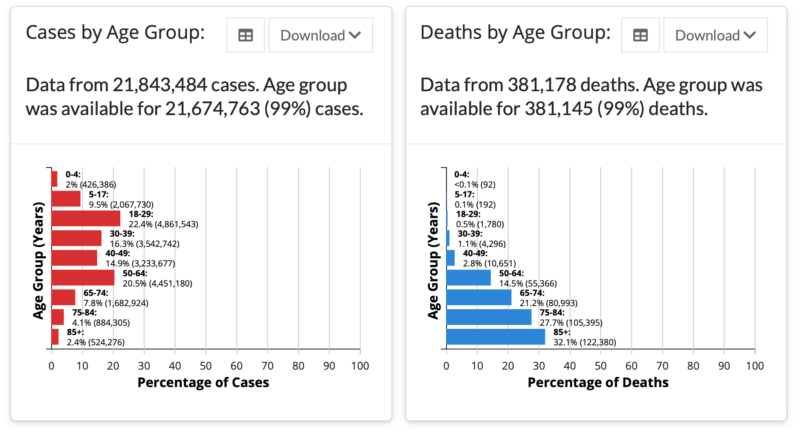.
Maybe you have noticed the rise in public incredulity toward the coronavirus narrative that you hear all day from the mainstream media. More doubts. More opposition. More protests. And far less trust. You are hardly alone. What began as a spark in the Spring of 2020 is now a raging fire. Try as they might to put it out, it is burning hotter and higher than ever before.
The data are already in and the lockdown elites are getting worried. Rightly so.
The great epidemiologist Donald Henderson in 2006 made two firm predictions of the consequences of lockdowns. First, he said, doing so would have no benefit in terms of disease mitigation. Indeed, lockdowns did not work.
Second, he said that doing so would result in discrediting public health and cause a “loss of public trust in government.” The loss in public trust – not just officials but also in media – is palpably obvious.
Turn your attention to a new round-up of surveys published in the New England Journal of Medicine. It specifically relates to vaccines but the results reflect a much broader loss of trust in general. Indeed, the surprising lack of public enthusiasm for the vaccines is but a symptom of a much larger problem.
However, despite scholarship emphasizing the role of trust in institutions to provide relevant information, polls suggest that sources of technical information about safety are not greatly trusted. Specifically, there is limited trust in the media or pharmaceutical companies to provide Covid-19 vaccine information: as few as 16% and 20% of respondents, respectively, say they have “a great deal/quite a bit” of trust in these organizations to provide such information. The public also has only moderate trust in information provided by the Food and Drug Administration.
The loss of trust was triggered by using an egregious and destruction means – lockdowns – in order somehow to achieve the unachievable; that is, the control of a widespread respiratory virus with severe outcomes for the elderly and sick but which is mostly mild for everyone else. It so happened that SARS-CoV-2 was not the universally deadly plague it was presumed to be one year ago, so these measures were wildly disproportionate.
Even if the pandemic had been as grim as the models predicted, there is no evidence in the historical record of lockdowns doing anything about a virus except to disrupt and destroy social and market functioning in a way that makes dealing with severe health outcomes even more difficult.
Consider one huge and unprecedented mitigation measure deployed last year: the stay-at-home order. Most states imposed them and enforced them with police power. It was not that different from near-universal house arrest – right here in the United States.
The claim was that this would slow or stop the spread or somehow cause the virus to be controlled, resulting in fewer severe disease outcomes. The propaganda became outrageous at points, with signs everywhere ordering people to “stay home and save lives,” as if leaving your house would result in lives lost.
People undertook enormous personal sacrifices to comply, at great personal expense. The economic costs were huge but so were the psychological and social costs. The result was an epidemic in loneliness and a rise in deaths of despair.
How did it work? A new study in Nature by four epidemiologists looked at the experience of 87 countries with a variety of policies, some loose and some extreme in strigency. They sought to correlate state-at-home orders with virus control. The results: they were unable to do so. The relationship does not exist, which is to say that it is consistent with randomness. The policy was worse than useless.
This study is the 31st that AIER has assembled using data nationally and internationally showing that lockdowns achieved nothing and cost everything. You are welcome to peruse the list and share it with your friends, who will be astonished (or maybe not) to discover that the public health edicts were unscientific and pointlessly brutal. All that sacrifice for nothing.
How many other things did public health authority get wrong? Thanks to a large email dump, from an account used by Anthony Fauci, we know that he was warned in early March 2020 that PCR testing was giving inaccurate results. As a result, almost all the data we thought we had now lives under a cloud. If testing is wrong, so too could be death data and so on. It’s a mess of confusion. The same email dump revealed that a US delegation went to China in mid-February to learn from the best in the politics and arts of locking down a society.
Incredibly, these policies were implemented at a time when American trust in government is at the lowest point it has been since 1972. Only 8% are willing to say that they trust government in domestic affairs a “great deal” whereas 20% say they trust government “not at all.” It will be fascinating to watch these polls move during this year, as more and more information comes out about what our governing elites did to the economy and our lives during the pandemic. It could be generations before trust returns to what it was before.
The last poll taken specifically about public health officials dates to September 2020, and it documented that trust in the CDC and Dr. Fauci were already evaporating. How does that compare with today? And what becomes of that trust over the next six months as more people discover just how terrible and thoroughly unscientific the policies were?
This collapsing trust is hitting about the time that the CDC has finally begun to put on its website some clarifying data. These charts for example make it clear that another public health measure from last year was wildly wrong: that getting the virus was very nearly a death sentence. We are at least getting some accurate data on the demographics of severe outcomes.


In truth, this was known since late March 2020. We reported on it on April 5. Even earlier, from March 8, we reported accurately on the nature of this virus, and fully expected that once the information was revealed, public fear would decline and the world would reopen. Instead, a combination of media and government messaging stoked that fear and fed more and longer lockdowns, disastrous policies that governors are racing to repeal even as the federal government warns against it.
The longer lockdown policies last – in practice especially but also when defended by public health authorities – the more that elites in government and media risk a devastating loss of credibility. The rebuilding of reputation might prove impossible for at least a generation or two.
There is a potential social cost to this loss in trust. Public health in the last century largely did good for humanity, with its emphasis on holistic perspectives on human well-being, the distribution of therapeutics and vaccines, the education on clean water and wise disease mitigation, its focus on rational science and calm over disease panic, and so much more. With lockdowns, and the tremendous public confusion sown by so many, this entire well-deserved reputation for science in the public interest is in tatters.







The author is spot on. PCR testing was politicized when government increased the number of times they ran the test from the manufacturer’s recommended 2 times to 11, and some cases 15. The government claims they did so in an abundance of caution, but the inventor of the PCR test has stated that running the test in excess of TWO times will increase the false positive rate to a point where the test is worthless as a testing tool. The test criteria was changed back to the manufacturer’s recommended rate of 2 readings on November 6th, 2020. Does anyone think that is a coincidence. I personally don’t believe in coincidences.
Why is it a surprise that the public doesn’t trust the medical profession after this attack on our common sense?
I hope I’m spelling balderdash correctly